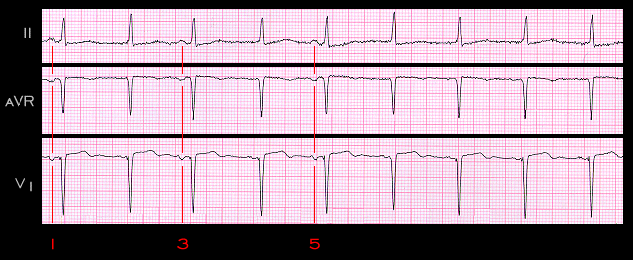
An ectopic atrial pacemaker located in close proximity to the sinus node will depolarize the atria in a sequence that is nearly normal. For this reason, the ectopic P wave will appear nearly normal. If the sinus rate and the ectopic rate are similar, the ECG will suggest a wandering atrial pacemaker. The ECG shown here is from a 78 year old male patient with pulmonary edema. The morphology of the P wave changes slightly, as in the previous example, but the P-P interval does not change in a phasic fashion. This suggests that the P wave changes most likely reflect an ectopic focus whose rate is similar to that of the sinus node. The observation that the two P wave morphologies are quite similar suggests that the ectopic focus is located in close proximity to the sinus node. When, as in this case, the sinus and ectopic rates are similar, they are said to be “isorhythmic”. The P waves labeled 1, 3, and 5 are the sinus P waves. The other P waves are ectopic.
